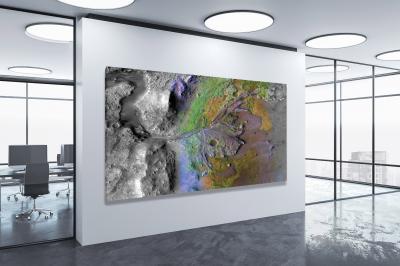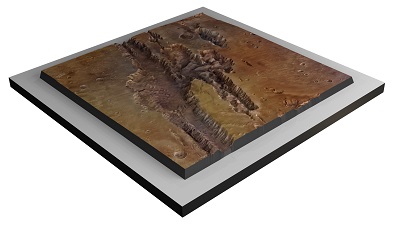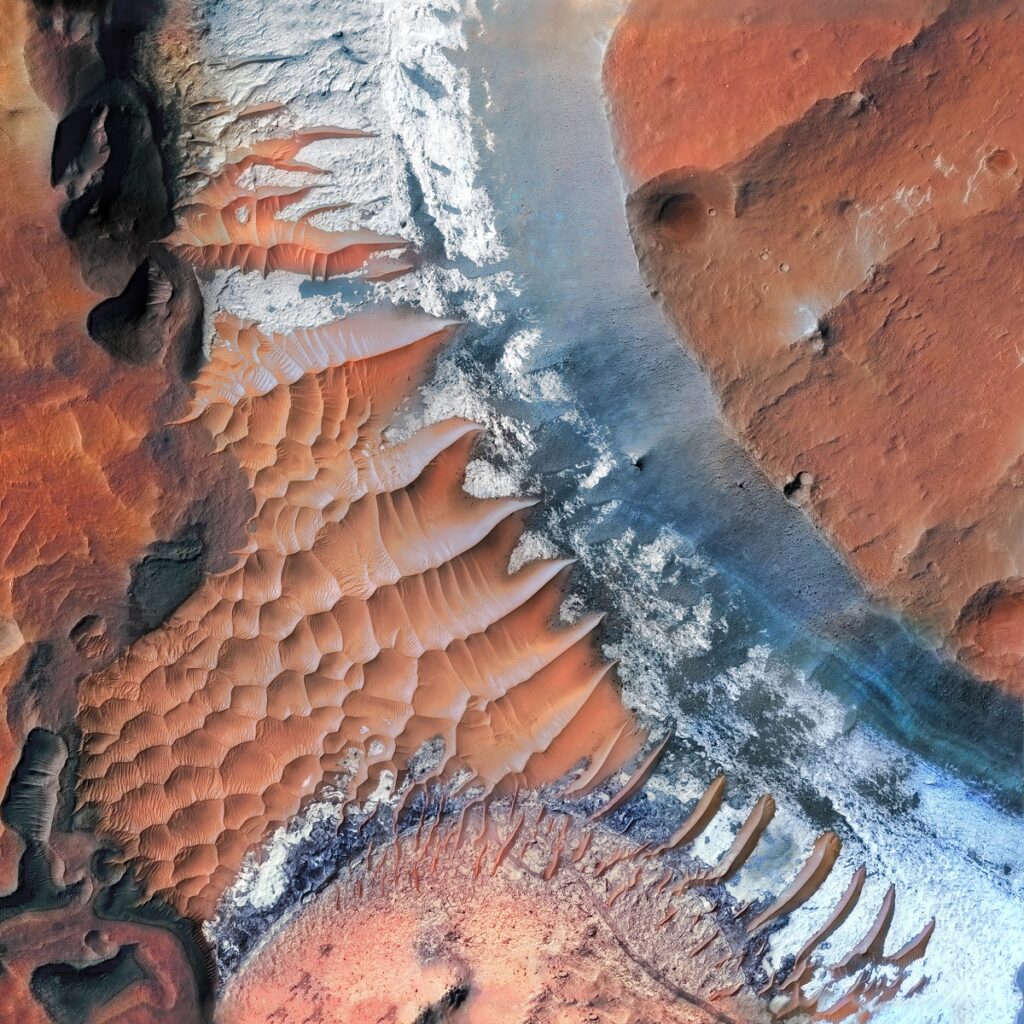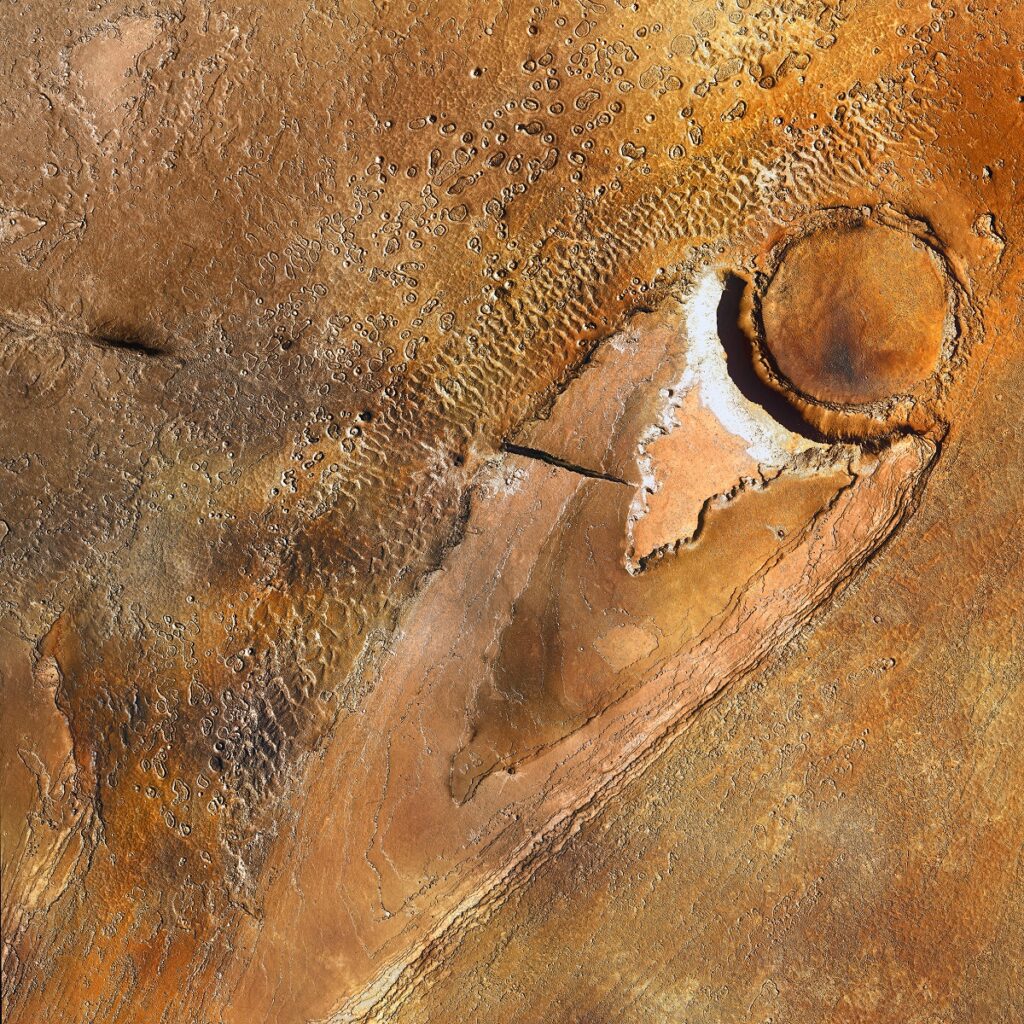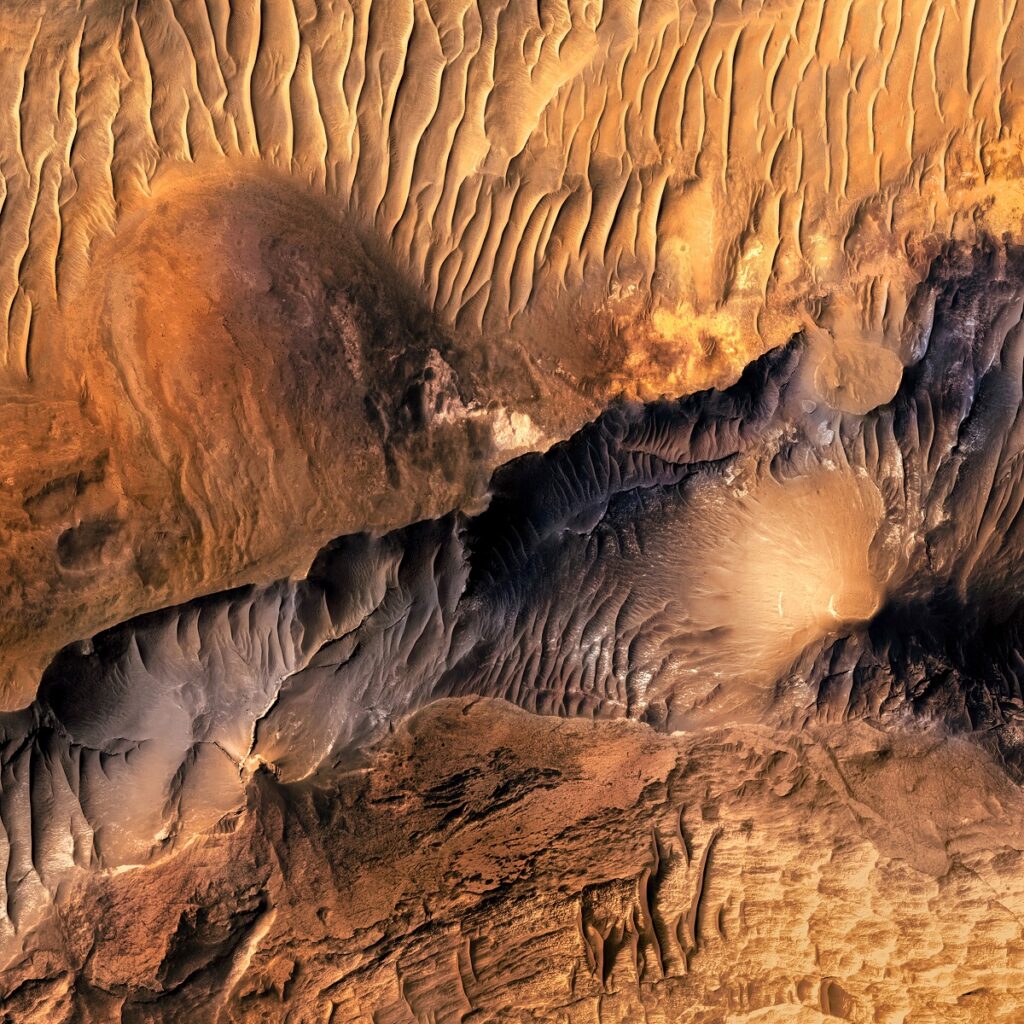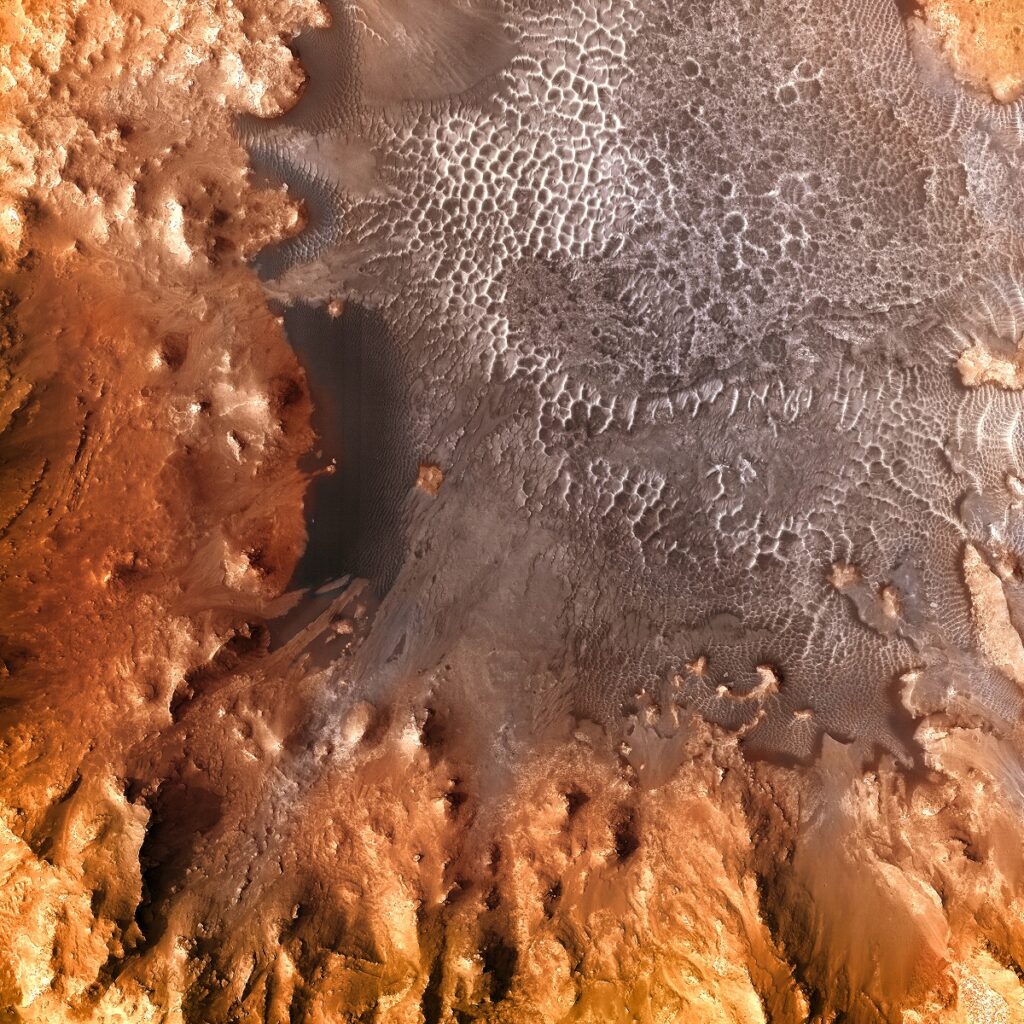Top 10 Largest Rivers on Mars
Top 10 Largest Rivers on Mars
WhiteClouds Builds 3D Marscapes and Canvas Prints
It’s easy to think of Mars as a barren, lifeless desert, frozen in time. But if you dig a little deeper (literally and metaphorically), you’ll find that this seemingly desolate planet is awash in ancient waterways that tell the tale of a world we’re just beginning to understand. Picture this: rivers stretching across vast Martian landscapes, their once glistening waters shimmering under a long-lost Martian sky. It sounds like a scene from a science fiction novel, yet it’s rooted in scientific fact. In this electrifying expedition, we’ll explore the top 10 largest rivers on Mars that not only challenge our understanding of the Red Planet but also captivate our imagination. So, buckle up as we navigate through time and space to witness the most awe-inspiring Martian rivers!
#1: Tiu Vallis (1,056 Miles)
Tiu Vallis, named after an ancient god of water, is no ordinary Martian river valley—it’s a sprawling, 1,056 mile-long enigma, located in the Chryse Planitia, that captivates scientists and laypeople alike. Its mind-boggling length makes it one of the longest features of its kind on Mars, but what truly sets Tiu Vallis apart is the grand mystery surrounding its origins. Unlike other Martian river valleys, Tiu Vallis leaves researchers scratching their heads about its source. Was it the result of substantial rainfall that once blessed the Martian surface? Or was it nourished by an intricate network of underground aquifers that pumped life-giving water into its channels? This intense debate isn’t just an academic exercise; it serves as a tantalizing window into Mars’ elusive aquatic history, offering clues that could potentially rewrite our understanding of the Red Planet’s capacity to sustain life. The ambiguity surrounding its origin makes Tiu Vallis a prime candidate for future missions aimed at unlocking the water-based mysteries of Mars. Whether it’s sending robotic probes to dig deeper into its sediment layers or deploying orbital scanners to map out its subsurface, Tiu Vallis remains a cornerstone in our relentless quest to understand Mars’ complex geological and climatic history.
#2: Kasei Vallis (982 Miles)
Kasei Vallis, located in the Tharsis region, is not just any Martian river valley; it’s a celestial spectacle with a fascinating, almost poetic narrative. Its name translates to “Mars” in Japanese, and the river itself does justice to its moniker by offering features that are dramatically Martian. This massive waterway, stretching an unbelievable 982 miles, forks into two separate channels as it winds through the rugged Martian terrain, resembling an earthly river delta but on a grand, extraterrestrial scale. But what’s the reason behind this peculiar bifurcation? Scientists hypothesize that tectonic shifts caused this dramatic splitting, turning Kasei Vallis into a living tableau of geological evolution. The diverging channels not only contribute to its unique morphology but also pose intriguing questions about the historical seismic activities that could have led to such a divergence. Could it have been volcanic activity? Or perhaps a seismic event of a different kind? The Tharsis region, known for its towering volcanoes, adds an additional layer of geologic complexity and mystery to this already captivating structure. Each branching pathway of Kasei Vallis whispers a different tale of Mars’ tumultuous past, making it a must-study feature for anyone keen to unravel the Red Planet’s intricate geologic tapestry.
#3: Ares Vallis (621 Miles)
Ares Vallis, named after Ares—the Greek god of war who finds his Roman counterpart in Mars himself—stands as a behemoth among Martian river valleys. Stretching an astounding 621 miles, this colossal landmark serves as a monumental testament to Mars’ turbulent and dramatic climatic past. The sheer scale of Ares Vallis, located in the Margaritifer Terra, takes one’s breath away, but it’s the narrative hidden within its geological features that captivates scientists and explorers alike. Enter the Pathfinder mission: when it touched down in this expansive valley in 1997, it did more than just capture awe-inspiring landscapes. It dug into the Martian soil and uncovered staggering evidence of cataclysmic floods, the likes of which Earth has rarely seen. Such colossal floods would have swept through the valley with incredible force, reshaping the landscape and leaving behind a host of geological secrets that continue to perplex us today. What kind of climatic events could have led to such intense flooding? Was it linked to Mars’ mysterious loss of atmosphere or a period of extreme volcanic activity? Or perhaps a combination of both? These questions remain the subject of fervent scientific inquiry, each new discovery turning yet another page in the unfolding epic that is Ares Vallis.
#4: Samara Vallis (497 Miles)
Imagine a river so old it could tell the ancient tales of Martian history through its very rocks. Welcome to Samara Vallis, a 497 mile-long Martian river that is among the oldest known waterways on the Red Planet. Situated in the Margaritifer Sinus quadrangle, this prehistoric behemoth likely predates most of the other river valleys on this list. But age is not just a number here; it’s a treasure trove of geological insights. The river valley is layered with sedimentary rocks that function almost like a natural library, each layer a page in the long history book of Martian hydrology. These rock formations are like geologic annals, waiting to be deciphered by the Rosetta Stones of future Mars missions. They are more than just stones; they are historical records that have the potential to rewrite our understanding of Mars’ earlier aquatic environments. Could they reveal periods of intense rainfall? Or maybe they point to a time when Mars was covered in vast lakes or even seas? The possibilities are as extensive as the river itself, making Samara Vallis not just an ancient stream but a living laboratory for planetary scientists keen on unlocking the secrets of Mars’ aqueous past.
#5: Loire Vallis (497 Miles)
With its moniker inspired by the Loire River in France, a region renowned for its exquisite vineyards and wines, Loire Vallis on Mars enchants scientists and dreamers alike. Stretching across a jaw-dropping 497 miles in the Noachis Terra region, Loire Vallis is no ordinary Martian river valley. Its serpentine, meandering shape and profoundly deep channels tell the story of a turbulent, perhaps even tempestuous past. Could it be that storms once swept across its breadth, or that catastrophic floods tore through its sinuous lengths, carving out the channels we see today? One can’t help but feel a sense of romantic whimsy at the thought of future Martian colonists cultivating vineyards along the river’s banks, perhaps producing the first Martian Merlot or Extraterrestrial Chardonnay. While the prospect seems like the stuff of science fiction, current advancements in astrobiology and terraforming do beg the question: could Loire Vallis one day become the Bordeaux of Mars? Such fantasies add a delicious layer of intrigue to this already captivating Martian landmark.
#6: Ma’adim Vallis (434 Miles)
Ma’adim Vallis is not just another river valley on the Red Planet; it’s a grandiose wonder, a titan among Martian geological features. Imagine a river so magnificent that it dwarfs the Grand Canyon, stretching nearly twice its length, to grasp the sheer magnitude of Ma’adim Vallis. It is like the Mississippi River of Mars, weaving a complex and intricate tapestry of ancient sedimentary tales across the Martian landscape. Its jaw-dropping size makes it a site of high scientific value and its location in Gusev Crater—an ancient lakebed—adds another layer to its allure. Enter the Spirit Rover: NASA’s intrepid robotic explorer was dispatched to this site with towering expectations. And oh, how it delivered! From fascinating sedimentary rock formations to curious mineral deposits, Spirit’s discoveries at Ma’adim Vallis have not just met but exceeded scientists’ wildest hopes. These rock formations have unveiled astonishing clues about Mars’ past, suggesting that these ancient waters may have had the potential for supporting microbial life. The study of Ma’adim Vallis is like an unfolding space opera, each chapter more riveting than the last, each stone turned a doorway into a bygone era of Martian history.
#7: Mawrth Vallis (373 Miles)
In the Martian landscape, nothing captures the imagination quite like Mawrth Vallis, the river valley with hues as vibrant as an artist’s palette. Its name means “Mars” in Welsh, and it certainly lives up to the title by exhibiting clay-rich terrain that mesmerizingly appears to be daubed in shades of blue, green, and red. It is located in the Oxia Palus quadrangle. This 373 mile-long spectacle is not just a visual delight; it’s a geological riddle and a biological enigma. The colorful cliffs have made it a leading candidate for the ExoMars Rover landing site. Why? Because those awe-inspiring colors could potentially be more than just a scenic marvel; they might hold secrets to past life on Mars. Could these colorful bands be fossilized remnants of microbial mats? Or are they purely the result of mineral interactions over eons? The spectrum of possibilities is as wide as the palette of colors that paint this incredible Martian feature. The fact that it was considered for the ExoMars Rover landing site emphasizes the scientific community’s keen interest in this kaleidoscopic marvel. Understanding Mawrth Vallis could be tantamount to unlocking one of Mars’ most bewitching secrets—its ability to sustain life. Each hue in its multi-colored cliffs could be a clue, a piece in the complex jigsaw puzzle that is Martian biology, making Mawrth Vallis a focal point of interplanetary intrigue.
#8: Nirgal Vallis (373 Miles)
Nirgal Vallis is an enigma wrapped in Martian soil, a twisting and turning channel that once conducted water through the rugged terrains of Mars’ southern highlands. It’s not just a river; it’s a cryptic narrative etched on the face of Mars. With its serpentine pathways, it invites speculation and fires up the imagination. Was this puzzling network shaped by cataclysmic floods that once tore through the Martian landscape, or was it the result of a slow, painstaking erosion over countless millennia? The answer remains one of Mars’ most tantalizing mysteries. But wait, there’s more. Its name, “Nirgal,” is derived from the god of the underworld in Greek mythology, adding a shroud of mythical wonder to its already intriguing existence. Just like the underworld is thought to hide secrets beyond human understanding, Nirgal Vallis prompts us to question what arcane truths might be buried beneath its ancient riverbed. Could it hold fossils of primitive Martian life forms, or rare minerals yet to be discovered? The river’s mysterious nature makes it a priority target for future Mars missions, as each discovery could provide the keystone for understanding not only Mars’ geological history but perhaps even secrets that resonate on a cosmic scale.
#9: Athabasca Vallis (186 Miles)
Athabasca Vallis, at 186 miles long, may not be the most colossal river valley on Mars, but it is unquestionably one of the most fascinating. This Martian wonder, located in the Cerberus Palus, captivates researchers with its unusually smooth plains, which are postulated to have been formed by flowing lava. This makes Athabasca Vallis something of an enigma in Martian geomorphology. Unlike its rugged and irregular counterparts, this river valley evokes an almost eerie calmness with its smooth surfaces. The geologic curiosity extends even further, as some scientists speculate that these smoother regions may have once been reservoirs of frozen water. Could Athabasca Vallis have been a Martian oasis at some point in its history? Or perhaps it was a lava channel from a now-dormant volcano. The theories are myriad, and each is more captivating than the last. The intrigue surrounding Athabasca Vallis has led to its status as a high-priority target for future Mars missions, with researchers eagerly awaiting the opportunity to explore its enigmatic plains and unlock its secrets.
#10: Echus Chasma (62 Miles)
Don’t let the size fool you; what Echus Chasma lacks in length, it compensates for in sheer, awe-inspiring grandeur. It is located near Valles Marineris. Although not a river in the traditional sense, this astounding geological feature holds a place of unique reverence among Martian formations. Why, you ask? Because Echus Chasma is thought to have been the birthplace of what might have been the most massive waterfall in the entire solar system. Imagine the scene: billions of years ago, liquid water cascading down cliffs, with falls so tall and expansive they would dwarf anything found on Earth, spilling life-giving water into vast Martian lakes or seas. It’s a celestial spectacle that would put even Earth’s most jaw-dropping natural wonders to shame. The thought of standing at the precipice of such a grand cosmic cascade is so electrifying it can send shivers down the spine of even the most seasoned planetary geologist. The vision brings up more questions than answers. Could Echus Chasma hold clues to Mars’ watery past? Might it one day be possible to recreate such a magnificent waterfall, given enough planetary engineering? The mysteries surrounding Echus Chasma make it an irrefutable focal point for the future of Martian exploration, offering a thrilling, even romantic, perspective on what the Red Planet might have been—or could one day become.
The Marvel of Martian Rivers: A Final Word
As we conclude this exhilarating odyssey with the top 10 largest rivers on Mars, we come to appreciate the planet as more than just a lifeless red rock. These Martian rivers are not mere indentations on the surface; they are the veins that once pulsed with the essence of life, standing as sentinels of Mars’ dynamic and transformative past. They challenge our perception of what the Red Planet was and what it could potentially become. With every mission and every rock sample, we unearth a chapter in a story that’s waiting for the next twist, possibly a plot twist that includes us. Until then, these rivers remain the sleeping giants of Mars, ready to awaken our imaginations and fuel our cosmic dreams.
Check out our 3D Mars Learning Center for more information on Mars and its largest rivers. You can also learn more at: NASA Mars Exploration.
More About Mars
Contact us today to learn more about our 3D services and how we can help you achieve your goals.
